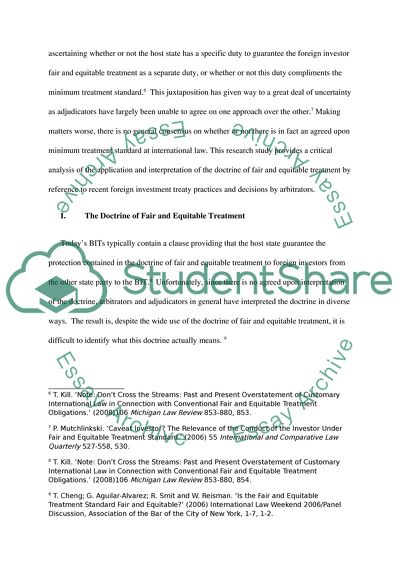Cite this document
(Concept of Fair and Equitable Treatment in Investment Treaties Research Paper - 4, n.d.)
Concept of Fair and Equitable Treatment in Investment Treaties Research Paper - 4. Retrieved from https://studentshare.org/law/1750700-critically-analyse-the-concept-of-fair-and-equitable-treatment-in-investment-treaties-taking-into-account-recent-investment-treaty-practice-and-arbitration-cases
Concept of Fair and Equitable Treatment in Investment Treaties Research Paper - 4. Retrieved from https://studentshare.org/law/1750700-critically-analyse-the-concept-of-fair-and-equitable-treatment-in-investment-treaties-taking-into-account-recent-investment-treaty-practice-and-arbitration-cases
(Concept of Fair and Equitable Treatment in Investment Treaties Research Paper - 4)
Concept of Fair and Equitable Treatment in Investment Treaties Research Paper - 4. https://studentshare.org/law/1750700-critically-analyse-the-concept-of-fair-and-equitable-treatment-in-investment-treaties-taking-into-account-recent-investment-treaty-practice-and-arbitration-cases.
Concept of Fair and Equitable Treatment in Investment Treaties Research Paper - 4. https://studentshare.org/law/1750700-critically-analyse-the-concept-of-fair-and-equitable-treatment-in-investment-treaties-taking-into-account-recent-investment-treaty-practice-and-arbitration-cases.
“Concept of Fair and Equitable Treatment in Investment Treaties Research Paper - 4”, n.d. https://studentshare.org/law/1750700-critically-analyse-the-concept-of-fair-and-equitable-treatment-in-investment-treaties-taking-into-account-recent-investment-treaty-practice-and-arbitration-cases.


